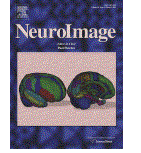Learning from other people’s experience: A neuroimaging study of decisional interactive-learning
Decision-making is strongly influenced by the counterfactual anticipation of personal regret and relief, through a learning process involving the ventromedial-prefrontal cortex. We previously reported that observing the regretful outcomes of another’s choices reactivates the regret-network. Here we extend those findings by investigating whether this resonant mechanism also underpins interactive-learning from others’ previous outcomes. In this functional-Magnetic-Resonance-Imaging study 24 subjects either played a gambling task or observed another player’s risky/non-risky choices and resulting outcomes, thus experiencing personal or shared regret/relief for risky/non-risky decisions. Subjects’ risk-aptitude in subsequent choices was significantly influenced by both their and the other’s previous outcomes. This influence reflected in cerebral regions specifically coding the effect of previously experienced regret/relief, as indexed by the difference between factual and counterfactual outcomes in the last trial, when making a new choice. The subgenual cortex and caudate nucleus tracked the outcomes that increased risk-seeking (relief for a risky choice, and regret for a non-risky choice), while activity in the ventromedial-prefrontal cortex, amygdala and periaqueductal gray-matter reflected those reducing risk-seeking (relief for a non-risky choice, and regret for a risky choice). Crucially, a subset of the involved regions was also activated when subjects chose after observing the other player’s outcomes, leading to the same behavioural change as in a first person experience. This resonant neural mechanism at choice may subserve interactive-learning in decision-making.
Download articolo completo:



